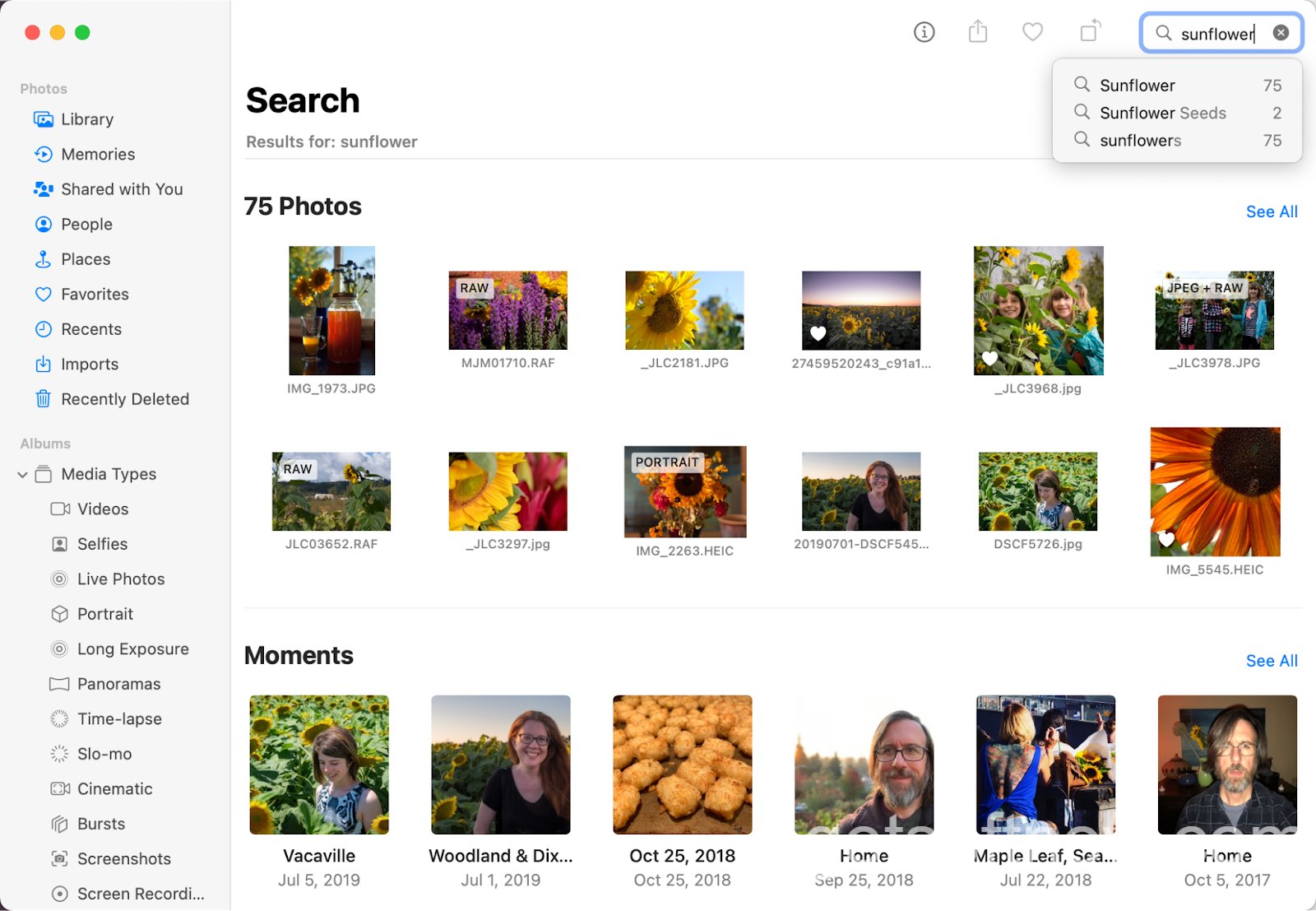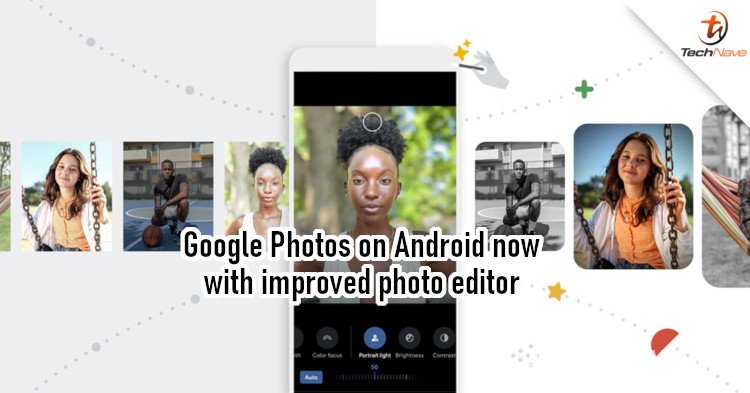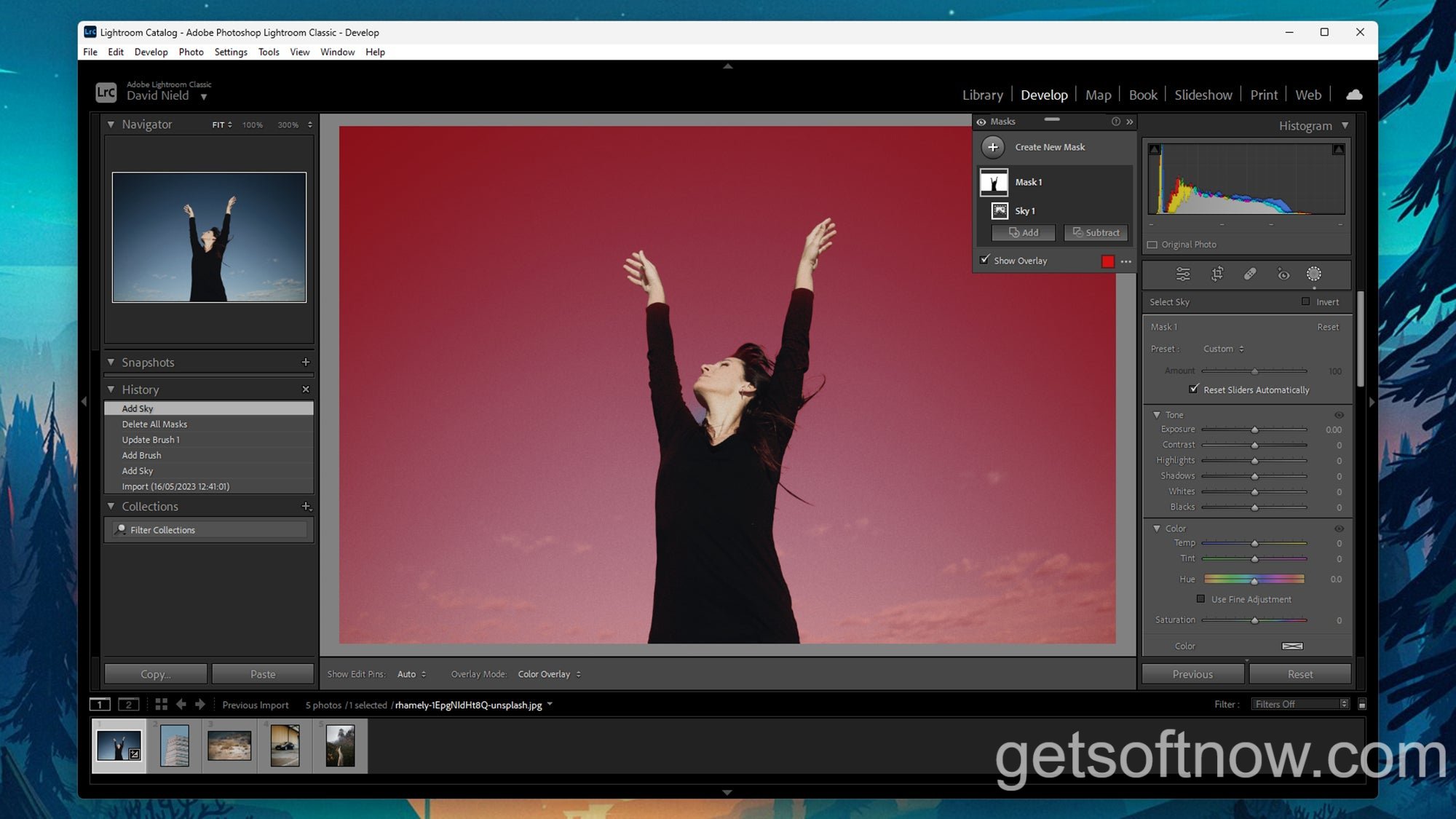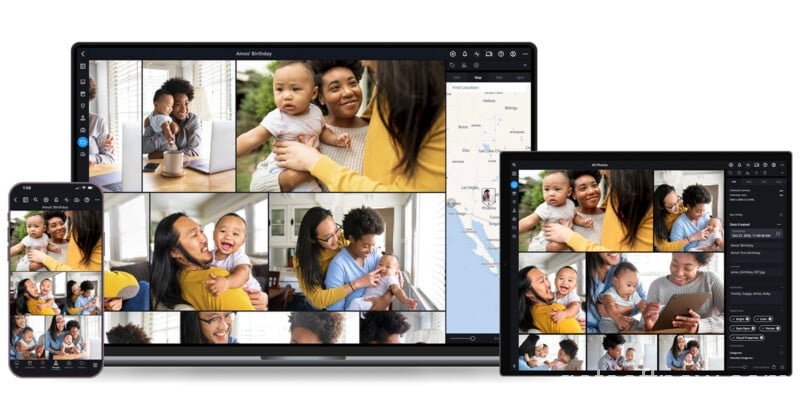In the ever-evolving digital landscape, the art of photo organization has become a daunting task for individuals and professionals alike. With countless images scattered across various devices and cloud storage platforms, keeping track of your cherished memories or professional portfolios can be an overwhelming endeavor. However, the emergence of AI photo tagging software has revolutionized the way we approach photo management, offering a game-changing solution that promises to streamline the process and unlock new levels of efficiency.
What is AI Photo Tagging Software?
AI photo tagging software harnesses the power of artificial intelligence and machine learning algorithms to automatically analyze and tag your digital images. By leveraging cutting-edge computer vision techniques, these advanced tools can recognize and identify various elements within an image, such as people, objects, scenes, and even abstract concepts.
The roots of AI photo tagging technology can be traced back to the early 2000s, when researchers began exploring the potential of machine learning for image recognition tasks. However, it wasn’t until the late 2010s that significant breakthroughs in deep learning and neural networks paved the way for more accurate and robust AI-powered image analysis.

The Benefits of AI Photo Tagging
The advantages of AI photo tagging software extend far beyond mere convenience. By automating the laborious task of manually tagging and categorizing images, these tools offer a multitude of benefits:
- Efficient and accurate tagging of large photo libraries: With the ability to process and analyze thousands of images in a fraction of the time it would take a human, AI photo tagging software ensures that even the most extensive photo collections can be efficiently organized and categorized.
- Automatic organization and categorization of photos: By intelligently recognizing and tagging the content within each image, AI tools can automatically sort and group photos based on their subjects, locations, or other relevant criteria, eliminating the need for manual sorting and album creation.
- Enhanced search and retrieval capabilities: With AI-generated tags and metadata attached to each image, finding specific photos within your library becomes a breeze. Powerful search filters and advanced queries can help you locate the desired images quickly, based on various criteria such as people, objects, locations, or events.
- Time-saving and productivity boost: By automating the tedious and time-consuming process of tagging and organizing photos, AI photo tagging software allows individuals and professionals to focus their efforts on more creative and valuable tasks, ultimately boosting productivity and efficiency.
“AI photo tagging software has completely transformed the way I manage my photography business,” says Sarah Johnson, a professional photographer based in New York City. “With thousands of client photos to sort through, this technology has been a game-changer, saving me countless hours and allowing me to deliver top-notch service to my clients.”
The Technology Behind AI Photo Tagging
Machine Learning and Computer Vision
At the core of AI photo tagging software lies the powerful combination of machine learning algorithms and computer vision techniques. Machine learning involves training complex models on vast datasets of labeled images, allowing the algorithms to “learn” and recognize patterns and features associated with various objects, scenes, and concepts.
Computer vision, on the other hand, encompasses the methods and techniques used to analyze and interpret digital images and videos. By extracting visual features such as color, texture, and shape, computer vision algorithms can identify and classify the contents of an image with remarkable accuracy.

Training Data and Model Development
The quality and diversity of the training data used to develop AI photo tagging models play a crucial role in their effectiveness. Researchers and developers curate vast collections of labeled images, meticulously annotated with detailed descriptions of their contents. These labeled datasets serve as the foundation for training the machine learning algorithms, enabling them to recognize patterns and associations between visual features and corresponding tags or labels.
The process of developing and fine-tuning AI models for photo tagging is an iterative and computationally intensive endeavor. Through techniques like deep learning and neural networks, these models continually improve their accuracy by learning from the provided training data, adjusting their internal parameters and weights to better recognize and classify image contents.
Popular AI Photo Tagging Tools
Google Photos
One of the most widely used and renowned AI photo tagging tools is Google Photos. Leveraging Google’s advanced machine learning capabilities, this cloud-based platform offers a seamless photo organization experience by automatically recognizing and tagging various elements within your images.
Google Photos’ AI-powered tagging capabilities go beyond simple object recognition. The software can identify specific individuals, locations, and even broad scene categories like “beach” or “city skyline.” Additionally, it can detect and group visually similar images, making it easier to find and manage duplicates or near-duplicates.

Adobe Lightroom
For professional photographers and enthusiasts, Adobe Lightroom offers a powerful AI-driven photo tagging solution. Integrated into the popular photo editing and management software, Adobe’s AI technology, called Adobe Sensei, enables intelligent image analysis and tagging.
Lightroom’s AI tagging capabilities can automatically detect and tag various elements within an image, including people, objects, locations, and even specific elements like “mountain” or “sunset.” This powerful feature streamlines the organization and cataloging process, making it easier for photographers to navigate their extensive image libraries and find specific shots quickly.

Other Notable Tools
While Google Photos and Adobe Lightroom are among the most popular and widely used AI photo tagging tools, there are several other notable platforms worth exploring:
- Amazon Rekognition: Amazon’s AI-powered image and video analysis service, offering advanced tagging and recognition capabilities for developers and businesses.
- Clarifai: A comprehensive AI platform with robust image and video recognition capabilities, suitable for a wide range of applications and industries.
- Microsoft AI: Microsoft’s suite of AI services, including computer vision and image recognition tools, designed for enterprise-level applications.
These tools cater to various use cases, ranging from personal photo management to enterprise-level image analysis and recognition tasks, offering a diverse range of features and capabilities to meet different needs.
Best Practices for Using AI Photo Tagging Software
While AI photo tagging software offers a wealth of benefits, leveraging its full potential requires following best practices to ensure optimal results and a seamless user experience.
Organizing Your Photo Library
Before diving into the world of AI-powered photo organization, it’s essential to have a well-structured and organized photo library. This initial groundwork will not only enhance the effectiveness of the tagging process but also make it easier to manage and navigate your photo collection in the long run.
- Consolidate your photos: Start by gathering all your digital images from various devices, cloud storage platforms, and external hard drives into a centralized location. This will ensure that your AI photo tagging software has access to your entire photo library, enabling a comprehensive and consistent tagging experience.
- Utilize folders and albums: While AI tagging can significantly reduce manual organization efforts, it’s still beneficial to create a basic folder structure or album hierarchy. This can help you group photos based on broader categories, such as events, locations, or projects, making it easier to navigate and find specific collections.
- Leverage existing metadata: If your photos already contain metadata like date, time, and location information, make sure to preserve and utilize this data. AI tagging software can often incorporate existing metadata into its analysis, enhancing the accuracy and relevance of the generated tags.

Customizing and Fine-tuning Tags
While AI photo tagging software is remarkably accurate, there may be instances where the generated tags don’t fully align with your specific needs or preferences. In such cases, most tools allow users to customize and fine-tune the tags to better suit their requirements.
- Manual tag editing: Many AI photo tagging tools provide options to manually add, remove, or modify tags for specific images. This can be particularly useful for correcting any inaccuracies or adding contextual information that the AI may have missed.
- Tag hierarchies and subcategories: Some software allows you to create tag hierarchies or subcategories, enabling more granular organization and categorization of your photos. For example, you could have a top-level tag like “Nature” with subcategories such as “Forests,” “Mountains,” and “Beaches.”
- Custom tag sets: Depending on your needs, you may want to create custom tag sets tailored to your specific use case or industry. For instance, a professional photographer may create a tag set specific to wedding photography, including tags like “bridal party,” “first dance,” and “cake cutting.”
“As a professional event photographer, being able to customize and fine-tune the tags generated by AI software has been a game-changer,” says Mike Thompson, owner of Capture Moments Photography. “It allows me to add important contextual details and ensure that my photo library is organized in a way that aligns perfectly with my workflow and client needs.”
Privacy and Security Considerations
While AI photo tagging software offers incredible convenience and efficiency, it’s essential to address potential privacy and security concerns, especially when dealing with personal or sensitive images.
- Local processing vs. cloud-based services: Some AI photo tagging tools process images locally on your device, while others rely on cloud-based services. If privacy is a concern, opt for local processing options to ensure your images never leave your device or local network.
- Encryption and secure storage: When using cloud-based AI photo tagging services, ensure that your images are encrypted during transfer and storage. Additionally, research the service provider’s data security practices and policies to ensure your personal data is adequately protected.
- Consent and permissions: If your photo library contains images of others, it’s essential to respect their privacy rights and obtain proper consent before uploading or processing their images with AI tagging software, particularly in professional or commercial contexts.
By following these best practices and addressing potential privacy concerns, you can leverage the power of AI photo tagging software while maintaining a secure and responsible approach to managing your personal or professional photo collections.
The Future of AI Photo Tagging
As the field of artificial intelligence continues to rapidly evolve, the future of AI photo tagging holds exciting possibilities and potential for further advancements.
Advancements in Computer Vision and AI
Ongoing research and developments in computer vision and AI algorithms are paving the way for even more sophisticated and accurate image analysis capabilities. With advancements in areas like deep learning, neural networks, and transfer learning, AI models will become increasingly adept at recognizing more complex and nuanced visual elements.
For example, future AI photo tagging software may be able to identify specific emotional states or expressions in images, recognize intricate details or patterns, or even interpret abstract concepts and metaphors. These advancements could open new doors for artists, researchers, and professionals in various fields, enabling more insightful and meaningful ways to organize and explore visual data.
Integration with Other Technologies
The potential integration of AI photo tagging with other emerging technologies holds exciting prospects for enhanced user experiences and novel applications.
- Augmented Reality (AR) and Virtual Reality (VR): By combining AI photo tagging with AR and VR technologies, users could explore and interact with their photo libraries in immersive and intuitive ways. Imagine being able to virtually “step into” your favorite vacation photos or relive cherished moments with added contextual information and interactive elements.
- Voice assistants and natural language processing: The integration of AI photo tagging with voice assistants and natural language processing could enable more intuitive and conversational ways to search, browse, and manage photo collections. Users could simply ask their digital assistant to find images based on specific criteria or descriptions, further streamlining the photo organization process.
- Automated storytelling and content creation: AI photo tagging could be leveraged to automatically generate compelling visual stories, slideshows, or even multimedia content by intelligently curating and arranging relevant images based on their tags and metadata. This could be a powerful tool for content creators, marketers, and educators alike.
As these technologies continue to converge and evolve, the possibilities for innovative and transformative applications of AI photo tagging software are virtually limitless, promising to reshape the way we interact with and experience our cherished visual memories.
Conclusion
In the digital age, where our lives are increasingly documented and captured through countless images, the advent of AI photo tagging software has been nothing short of revolutionary. By harnessing the power of artificial intelligence and machine learning, these advanced tools have fundamentally transformed the way we approach photo organization and management.
From efficiently tagging and categorizing vast photo libraries to enhancing search and retrieval capabilities, AI photo tagging software offers a comprehensive solution that saves time, boosts productivity, and unlocks new levels of efficiency. With popular platforms like Google Photos, Adobe Lightroom, and Amazon Rekognition leading the charge, users can now experience the convenience of automated image analysis and intelligent organization.
However, the true potential of AI photo tagging extends far beyond mere organization. By following best practices, such as customizing tags, leveraging existing metadata, and addressing privacy concerns, users can tailor the technology to their specific needs and preferences, ensuring a seamless and personalized experience.
As the field of artificial intelligence continues to evolve, the future of AI photo tagging holds exciting possibilities. From advancements in computer vision and deep learning algorithms to integration with emerging technologies like augmented reality, virtual reality, and voice assistants, the way we interact with and experience our visual memories is poised for a profound transformation.
In the ever-expanding digital landscape, AI photo tagging software emerges as a powerful tool, revolutionizing the art of photo organization and ushering in a new era of efficiency, convenience, and innovative visual storytelling.

Leave a Reply